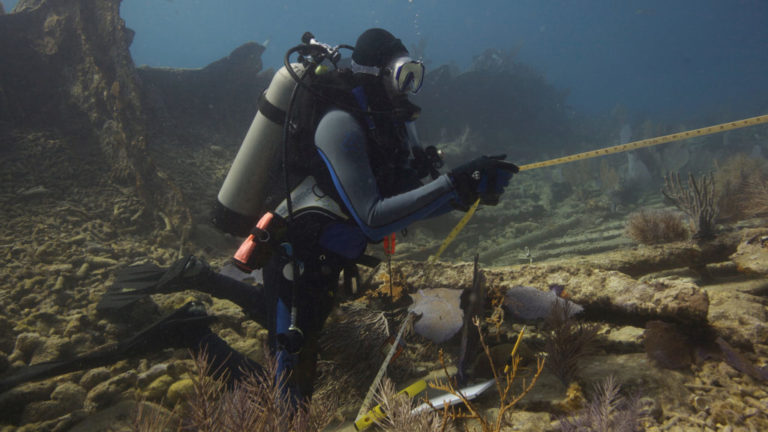The ocean covers about 70% of the earth’s surface, but only 5% is currently being explored. From the deep sea to hidden gems and sunken buildings, a sea is a place of continual surprises. You will be fascinated with the next era of old ruins, lost treasures.
There are more historic artifacts under the sea now than in any museum of the globe it shouldn’t be so surprising – considering it is literally hundreds of feet underwater.
Fortunately, some of the most fascinating discoveries made by deep water divers to date are on your doorstep.
Table of Contents
What is underwater archaeology?
The archaeology of underwater contexts is archaeology as practiced in an aquatic environment. It includes excavation, documentation, conservation, and reconstruction of material remains found in either fresh or saltwater.
Underwater archaeology is commonly used for archaeology involving ships or submerged terrestrial sites. It is also known as maritime archaeology which is the archaeology of human interactions with water.
There are many types of archaeology and each one is unique in its own way but what they all have in common is the excavation, documentation, and reconstruction of artifacts to tell a story about history.
How to find things underwater
We’ll start with an easy one. The archaeologist uses the same tools to find things in water as they do on land (see archaeology tools).
The archaeologist will use sonar equipment to make a map of the area and mark targets for examination. They may also spot targets by getting up close with cameras, excavators, scuba gear, or even submarines.
After the archaeologist identifies an interesting spot, they’ll start to document it with photos and drawings, make test excavations around it for context, and bring it up to the surface if possible.
Possible targets include shipwrecks (like ships used in historic battles), sunken cities, or even civilian objects like sunken cars or lost fishing equipment.
The benefits of underwater archaeology
Many things were hidden by water. As archaeologist Joe merely said, “The sea-level changes pretty dramatically.” Buildings, ships, and even entire civilizations have been lost to time.
Underwater archaeology is an important field because it helps us find answers about the past that are now underwater.
This knowledge can tell us many things about the people who once used it.
Did they use boats? Who were their trading partners? How did they make ceramics or tools? How did they stack bricks to build buildings?
By finding underwater artifacts, we can answer these questions.
Maritime archaeology is also an excellent way to learn how past cultures adapted to the harsh realities of their environment.
Ships are closed systems that have to sustain life both onboard and in coastal regions. They are also complex pieces of engineering that require careful planning, design, and maintenance to sail for years at a time.
Archaeology can teach us about how people dealt with different problems like climate change, disease, and warfare.
The challenges of underwater archaeology
The biggest challenge is that we can’t generally get to the sites ourselves. We need expensive and advanced machinery (like mini-submarines) to see what’s there.
Another problem comes when we try to excavate it. Many shipwrecks are too deep for scuba divers, so we need special robots with cameras and arms .
But this poses another problem: because these tools are so large or delicate, they may not be able to reach every site in the water. And if one tool doesn’t work properly, it might ruin archaeology at a whole new spot!
Why you should consider a career in underwater archeology
wrecks around the world so they can learn how past cultures navigated their seas or fought with one another for territory.
Underwater parks are also opening up in many areas because governments recognize how vital these sites are for history and culture.
So you can get paid to travel around the world, scuba dive in fantastic locations, and discover how people lived long ago. What could be better?
Conclusion
We hope you enjoyed reading about underwater archaeology and the challenges it has. We also want to emphasize that this is a rewarding career path with many opportunities for travel, scuba diving in exotic places, and salvaging history from underneath the waves.

